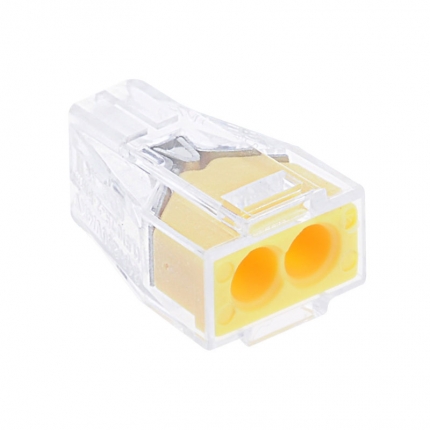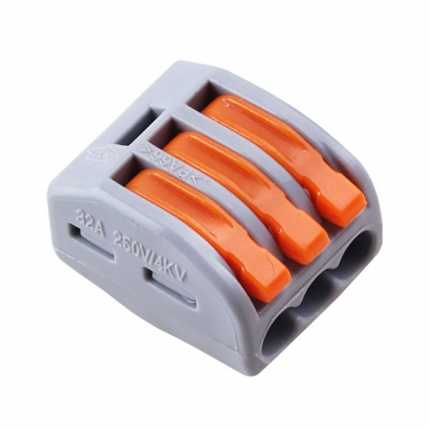Phosphorus bronze: It is composed of Cu, Sn, P, Fe, Pb, Zn and so on, the main component is copper.
Brass: It is composed of Cu, Fe, Pb, Zn and so on, the main component is copper.
Stainless steel: It is composed of Fe, Cr, Ni, C, Si, Mn, P, S, Al, Co and so on, the main component is iron.
II. Physical Characteristics
1. Specific gravity/density
Specific gravity is the relative density of a unit volume of material and the same unit of water, no unit. Density is the ratio of mass to volume of a substance in g/cm3. On the surface, their values are quite close. In essence, they are also interrelated. The density of the object determines the proportion of the object, and the proportion of the object is the specific expression of the density of the object. But they are different. The density of an object reflects the intrinsic characteristics of the object and the mass of the object per unit volume. The mass of the object is determined. The proportion of the object reflects the weight of the object per unit volume. The weight of an object is caused by gravity and changes.
2. Modulus of elasticity
Also known as Young's coefficient, unit N/m2. It is defined as the ratio of stress to corresponding strain of ideal material in small deformation. It is a material constant, which represents the ability of material to resist elastic deformation, and its numerical value reflects the degree of difficulty of elastic deformation of the material.
The influence of elasticity coefficient on
electrical wire connector: If the connector terminal requires small displacement, limited downward stroke and good contact, then the material with high elasticity coefficient should be selected.
3. Electrical conductivity IACS
Conductivity is the ability of matter to transmit current and the reciprocal of resistivity. When the conductor maintains the unit potential gradient at 20 C, the current flows through the unit area, unit S/m. For example: copper 59.6 × 10^6(S·m-1)/ 0.596 x 10^6 / cmΩ, we often base on 100% conductivity of pure copper IACS, 172.41 / resistivity =% IACS.
The effect of electrical conductivity on electrical wire connectors: If connectors require lower contact resistance, then materials with relatively high electrical conductivity should be selected.
4. Coefficient of thermal expansion
It refers to the regularity coefficient of material's geometric characteristics varying with temperature under the effect of thermal expansion and contraction. In practical application, there are two main thermal expansion coefficients: linear thermal expansion coefficient and volumetric thermal expansion coefficient. In most cases, the coefficient is positive, that is to say, the volume increases with the increase of temperature.
5. Thermal conductivity
According to Fourier's law, the thermal conductivity of the reactant is defined as the heat transferred by the unit thermal conductive surface in a unit time by the unit temperature gradient (the temperature decreases by 1K in the length of 1m). The unit is W/(m.k). The larger the value, the faster the heat transfer. It is related to the composition, structure, density, moisture content and temperature of the material.
Material with high thermal conductivity is heated fast and heat dissipation is fast, but the temperature rise is low. Fast temperature climbing is not the desired result of connector use. Copper alloys are metal materials with high thermal conductivity, so when used in connectors under high temperature environment, special attention should be paid to this parameter of materials.
III. Mechanical Properties
1. Yield Strength
Also known as yield strength, it is the critical stress value of material yield. When the stress exceeds the elastic limit, the deformation increases rapidly. At this time, besides the elastic deformation, some plastic deformation occurs. When the stress reaches point B, the plastic strain increases sharply and a small fluctuating platform appears in the curve. This phenomenon is called yield. The maximum and minimum stresses in this stage are called upper yield point and lower yield point respectively. Because the value of the lower yield point is relatively stable, it is called yield point or yield strength as an index of material resistance.
The so-called yield refers to the transition of metal from non-uniform elastic state to elastic-plastic state after reaching a certain deformation stress. It marks the beginning of macro-plastic deformation.
The effect of yield strength on
electrical wire connectors: The higher the yield strength of the metal material, the greater the positive force of the terminal.
2. Tensile Strength
When the material yields to a certain extent, its resistance to deformation increases again due to the rearrangement of internal grains. At this time, although the deformation develops rapidly, it can only increase with the increase of stress until the maximum stress is reached. Thereafter, the material's ability to resist deformation is obviously reduced, and a large plastic deformation occurs at the weakest point, where the section of the specimen shrinks rapidly, leading to necking until fracture. The maximum stress value (corresponding value at point b) before material rupture under tension is called strength limit or tensile strength.
3. Elongation Percent
It refers to the percentage of elongation length to original length when metal material is broken by external force (tension).
4. Hardness
The ability of a material to locally resist hard objects pressing into its surface is called hardness. The local resistance of solids to invasion of external objects is an index for comparing the softness and hardness of various materials. Because all metal materials of the
electrical wire connector are very thin, they are measured by Vickers hardness (HV). Vickers hardness (HV) is pressed into the material surface by a diamond square cone indenter with a load of less than 120 kg and a top angle of 136 degrees. The surface area of the indentation pit is divided by the load value, which is Vickers hardness value (HV).
Hardness is an important parameter of
electrical wire connector material selection.
5. R/T ratio
The so-called R (radius) refers to the inner diameter of bending, and T (thickness) refers to the thickness of material. )
If the inner diameter of the product is smaller, the material with smaller R/T ratio must be chosen. In theory, if the R/T ratio equals zero, it means that the bending performance of the material is excellent, even if the internal R=0, there will be no cracks. But the general material certification or characteristic table shows 90 degree bending data, and rarely 180 degree bending data. Of course, we hope that the smaller the R/T ratio is, the better, which is good for miniaturization of products.





